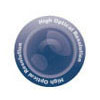 |
|
High optical resolution
Be amazed! The Dino-Lite Edge enters a new era of digital microscope by having the highest optical quality ever, through the whole range of magnification, among the Dino-Lite product series.
|
|
| |
 |
|
Convenient flexible magnification
The Dino-Lite is capable of variable magnification with a range of 20~220x depending of working distance by simply zooming in or out with just a rotating dial.
|
|
| |
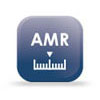 |
|
Automatic Magnification Reading (AMR)
Working with DinoCapture2.0, the AM4515T can detect and display the magnification, and store it with the captured picture automatically, making it especially useful for applications when reading the magnification is unfeasible or difficult. The AMR also brings more accuracy by eliminating the ambiguity of visually reading the magnification, while keeping the possibility to be further calibrated by the existing calibration function in DinoCapture 2.0.
|
|
| |
 |
|
More viewing options
The new detachable front cap design used in the Dino-Lite Edge series aims to satisfy most of the needs for various applications. Extra working distance, which is often desired when working under higher magnification range, can be easily obtained by removing the cap. Different caps - such as diffuser cap, side light cap, close cap, and more - can be selected for best viewing the object or for better suited to the application.
|
|
| |
| |
|
Interchangeable Front Caps
 |
N3C-C / Close Cap
This cap protects the lens and LED lights from contamination of dust, debris, or moisture. |
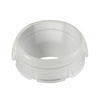 |
N3C-D / Diffuser Cap
This cap diffuses the LED light.
|
 |
N3C-D2 / Opal Diffuser Cap
This cap diffuses the LED light.
|
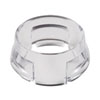 |
N3C-E / Extended Open Cap
Dino-Lite Edge (stand type) will focus at approximately 200x when the cap touches surface.
|
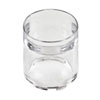 |
N3C-L / Long Cap
This cap is useful to adjust the working focus of Dino-Lite Edge at lower magnification.
|
 |
N3C-O / Open Cap
This is the standard cap for normal usage.
|
 |
N3C-S / Sidelight Cap
This cap creates images with more depth and texture.
|
|
|
|
| |
| |
|
Information about working distance and field of view
| M |
WD |
FOV (x) |
FOV (y) |
DOF |
| 20 |
60.2 |
19.5 |
15.6 |
2.5 |
| 30 |
33.5 |
13 |
10.4 |
1.8 |
| 40 |
20.9 |
9.8 |
7.8 |
1.5 |
| 50 |
13.9 |
7.8 |
6.3 |
|
| 60 |
9.7 |
6.5 |
5.2 |
|
| 70 |
7.1 |
5.6 |
4.5 |
1.0 |
| 80 |
5.5 |
4.9 |
3.9 |
|
| 90 |
4.5 |
4.3 |
3.5 |
|
| 100 |
4.1 |
3.9 |
3.1 |
|
| 110 |
4 |
3.6 |
2.8 |
|
| 120 |
4.1 |
3.3 |
2.6 |
|
| 130 |
4.5 |
3 |
2.4 |
|
| 140 |
5 |
2.8 |
2.2 |
|
| 150 |
5.6 |
2.6 |
2.1 |
|
| 160 |
6.3 |
2.4 |
2 |
|
| 170 |
7.1 |
2.3 |
1.8 |
|
| 180 |
8 |
2.2 |
1.7 |
|
| 190 |
8.9 |
2.1 |
1.6 |
|
| 200 |
9.9 |
2 |
1.6 |
|
| 210 |
10.9 |
1.9 |
1.5 |
|
| 220 |
11.9 |
1.8 |
1.4 |
0.1 |
|
M = magnification rate WD = working distance (without front cap) FOV = field of view DOF= depth of field Unit = mm
|
|












